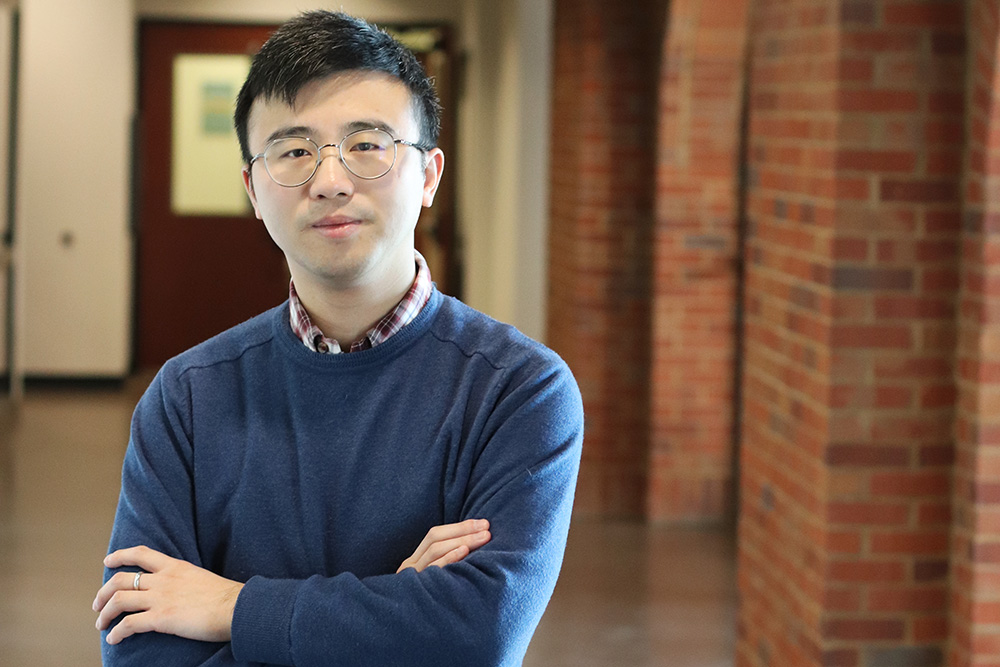Li’s Research Could Help Underwater Infrastructure Inspections
Imagine that a worker fixing aging infrastructure located underwater suits up for work with a pair of artificial intelligence (AI) goggles to visualize and control implements with robotics. The advancements in virtual reality technology has a place in improving conditions for workers, especially those whose work depends on robotics.
Improving this technology for underwater workers is one of the goals of CEE Assistant Professor Shuai Li, who received a National Science Foundation grant with collaborators at the University of Florida and the University of Hawaii to pursue a project to create an interface for remote operation of underwater robots.
For those whose work is underwater, having a human-robot “sensory transfer,” or a seamless translation of perceptions and actions between the operator and the robot, will allow workers to utilize more real-time data from the environment to improve accuracy and efficiency of their work such as infrastructure inspection.
Through this collaborative effort, Li hopes to develop AI-based sensing techniques customized for underwater robots and integrating those with customizable interfaces for better human-robot collaboration. This, in turn, can help workers in industries such as subsea infrastructure inspection, geological surveys, marine habitat monitoring, pollution assessments, ship-hull inspections, unexploded ordnance surveys, contraband detection, aquaculture monitoring, search and rescue, and archaeological exploration and surveys.
Li says that AI could power the sensing capabilities of robots in the challenging underwater environment and translate the robot perceptions into useful information that human operators can use.
“We can borrow from improvements in AI technology to perceive complex underwater environments and inspect underwater infrastructures from the fusion of sensing data,” said Li. “This will help communicating the unprecedented information to workers via wearables and virtual reality-based interface, allowing them work from remote to better control the robot.”
One benefit this technology could have is to reduce the extensive training currently required for operators, thereby increasing access to these jobs while reducing industry training expenses and downtime due to personnel shortages. Li notes that the project will study the most effective way to improve worker performance, safety, and quality of life. Further, by requiring a diverse set of subjects, it will show how such human-robot interfaces can expand economic opportunity to broad sections of society.
